Introduction
Japanese food is famous for its tasty variety. From sushi’s delicate flavors to the comforting warmth of ramen, it’s a fun food adventure. To enjoy it fully, you need to know the words related to this cuisine. In this article, I’ll help you learn Japanese food words, so you can enjoy your meals at Japanese restaurants even more.
Sushi and Sashimi: The Art of Raw Fish
Sushi (寿司)

Sushi is perhaps the most famous Japanese dish. It’s a palatable combination of vinegared rice, fresh seafood, and vegetables. Varieties include Nigiri (hand-pressed) and Maki (rolled) sushi.
If you’re lucky enough to go to a Sushi restaurant where ‘Itamae’ chefs are making sushi, you will experience a truly remarkable culinary art form. As ‘Itamae’ in Japan usually undergo many years of rigorous training.
Sashimi (刺身)
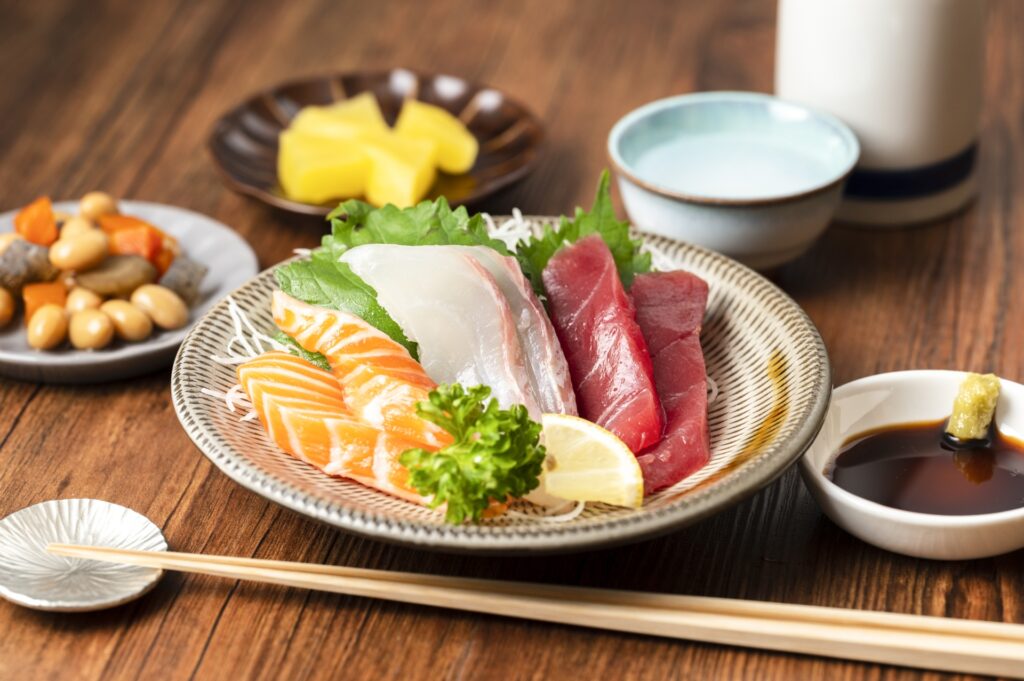
Sashimi consists of thinly sliced raw fish or seafood, often served with soy sauce, wasabi, and pickled ginger. Common choices include maguro (tuna), sake (salmon), and hamachi (yellowtail).
In Japanese supermakets, it’s easy to find Sashimi. It is a popular choice for various occasions, including parties and gatherings, and it is often served as a type of “tsumami,” which are snacks or foods that accompany alcoholic drinks.
Ramen and Udon: Noodles to Warm the Soul
Ramen (ラーメン)
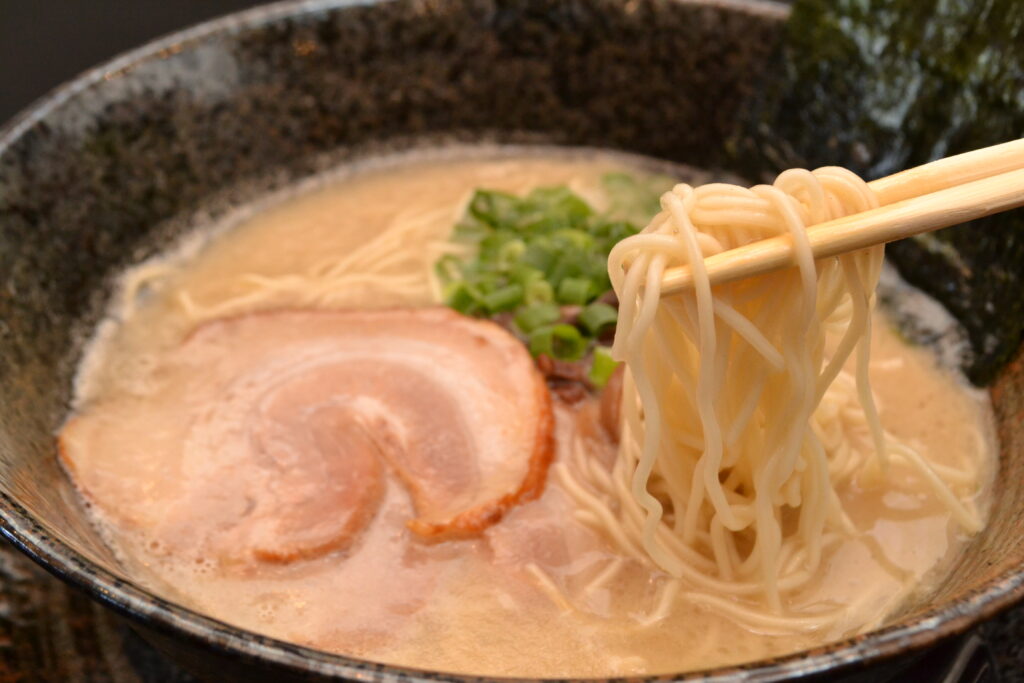
Ramen is a hearty noodle soup that comes in various flavors and styles, such as Shoyu (soy sauce), Shio (salt), Tonkotsu (pork bone), and Miso.
Ramen is incredibly popular in Japan, so you’ll find numerous Ramen restaurants literally everywhere!
If you happen to visit Yokohama, there is a food hall dedicated solely to Ramen. It might not be a bad idea to immerse yourself in the world of Ramen!
It is called ‘Japan Ramen Food Hall’ and is a ramen lover’s paradise! It’s home to a variety of stalls, each serving unique ramen styles, from rich tonkotsu to light shoyu. You can personalize your bowl with delicious toppings like chashu pork and soft-boiled eggs. It’s not just a place to eat; it’s a cultural experience celebrating the art of Japanese ramen. Whether you’re a ramen expert or new to it, this food hall promises a tasty journey into the world of ramen.
Soba (そば)
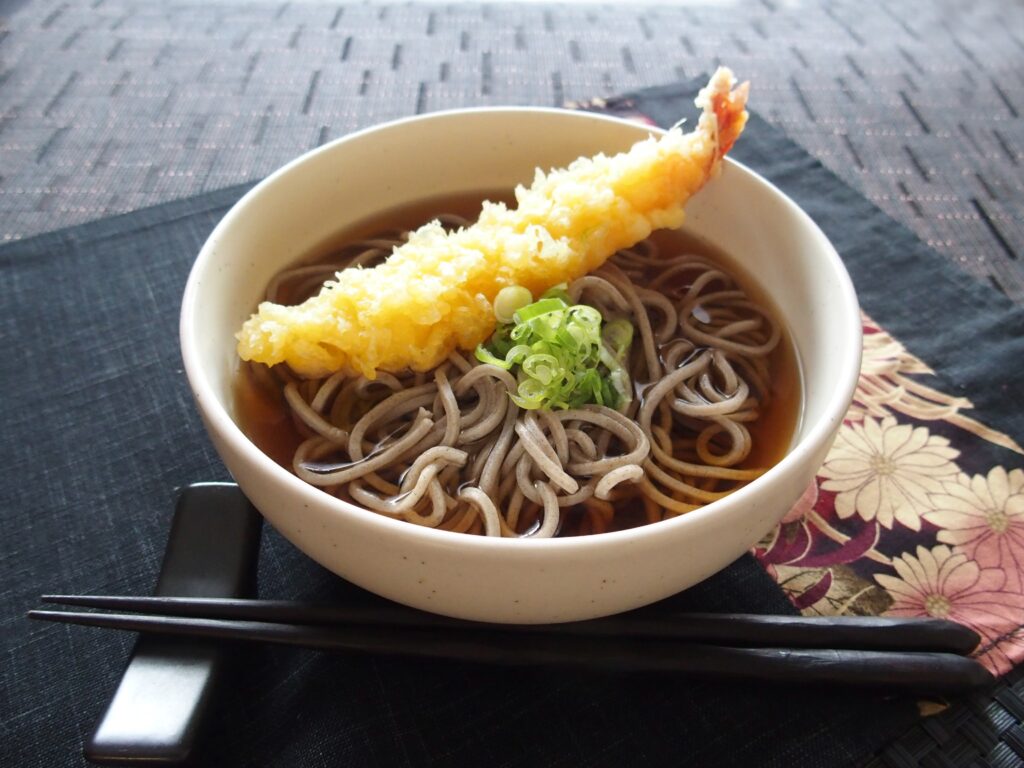
Soba noodles are made from buckwheat flour and can be enjoyed hot or cold. Zaru Soba (cold soba served with dipping sauce) is a summer favourite.
Fun Fact about Soba
Soba noodles are traditionally consumed on New Year’s Eve in a custom known as “Toshikoshi Soba.” It is believed that eating soba on this day brings good luck and helps to let go of the hardships of the old year.
Udon (うどん)
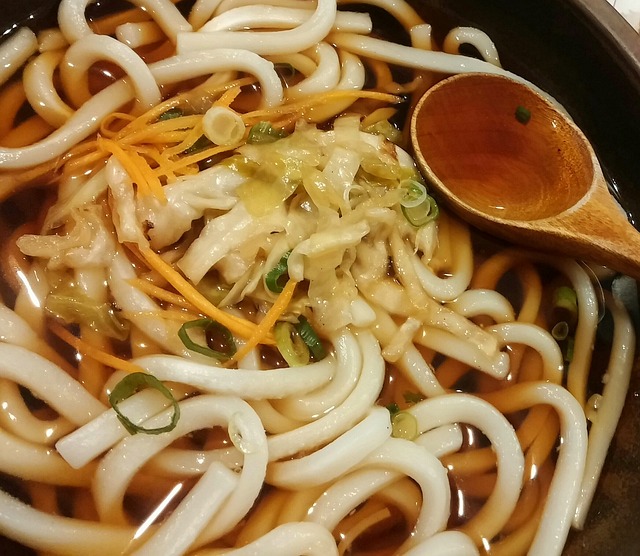
Udon are thick wheat noodles served in a mild, soy-based broth. They can be enjoyed hot or cold, and toppings range from tempura to ‘abura-age’, which is deep-fried slices of tofu.
Kitsune Udon
Kitsune Udon is featuring udon noodles served a unique and sweet topping: deep-fried slices of tofu, known as “abura-age,” which are often marinated in a sweet soy-based sauce. These golden-brown tofu pockets add a sweet and savory contrast to the savory broth and thick udon noodles, creating a harmonious balance of flavors and textures.
Why is it called Kitsune Udon?
‘Kitsune’ means foxes and it was believed that Kitsune had a paticular fondoness for abura-age.
Tempura and Kara-age: Crispy and Succulent Delights
Tempura (天ぷら)
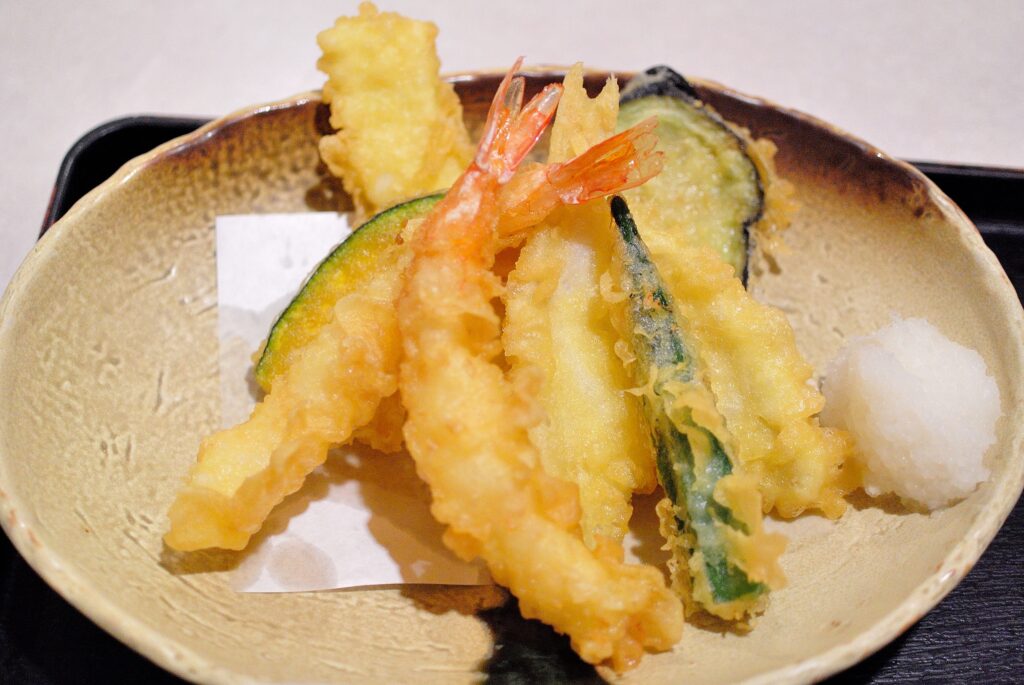
Tempura refers to battered and deep-fried seafood or vegetables. It’s known for its light and crispy texture. Common choices include shrimp (ebi) and vegetables like sweet potato (satsumaimo).
Kara-age (唐揚げ)
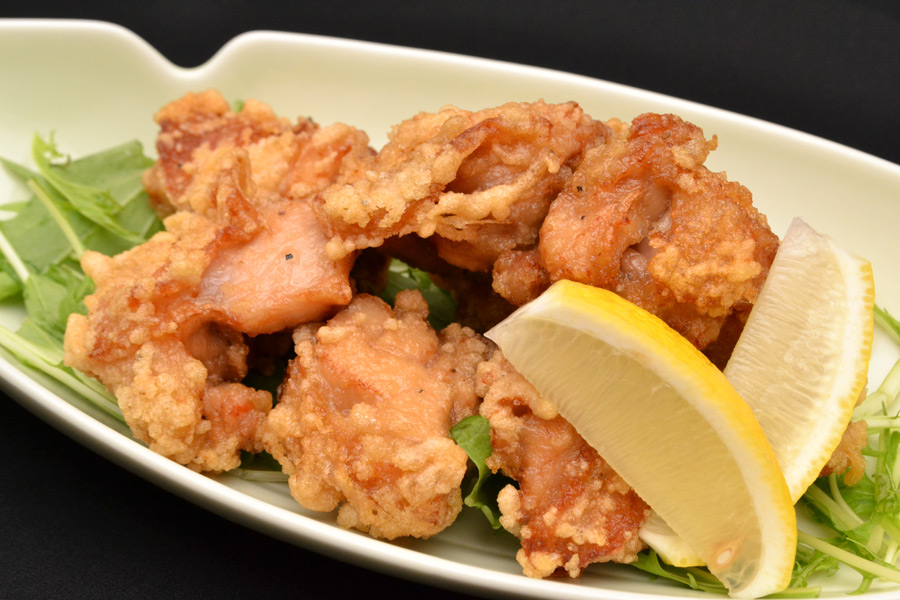
Karaage is a beloved Japanese cooking method that involves marinating bite-sized pieces of food, most commonly chicken, in a flavorful mixture of soy sauce, sake (Japanese rice wine), and garlic. The marinated pieces are then coated in a light dusting of potato starch or cornstarch and deep-fried until they become wonderfully crispy and golden brown.
In Japan, you’ll see Kara-age everywhere! In a bento-box, Izakaya or even as a filling of a rice ball.
Donburi: Simple and Satisfying Bowls
Donburi (丼)
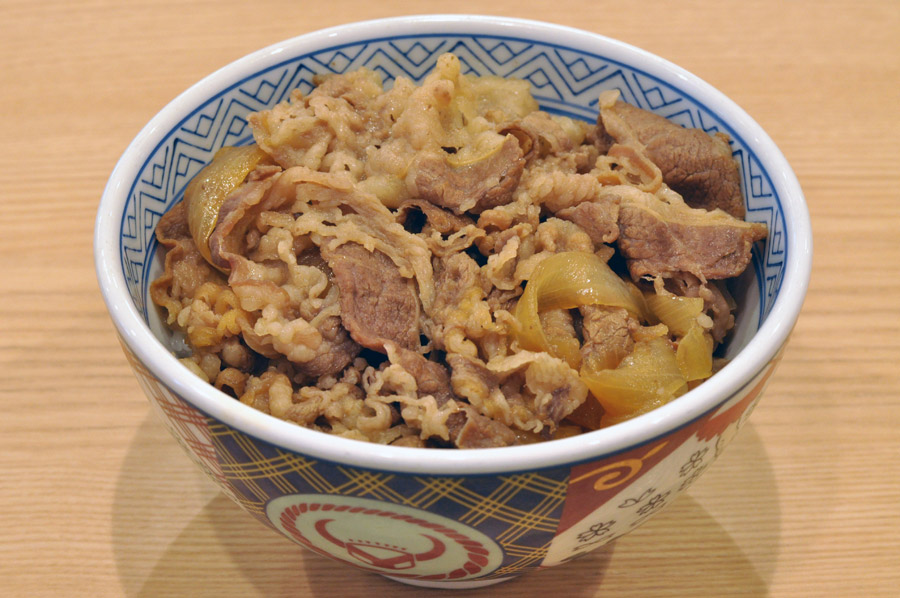
Donburi is a bowl of rice topped with various ingredients. Examples include Katsudon (breaded pork cutlet), Gyudon (beef and onions), Kaisendon (raw fish and shelfish), Tendon (tempura) and Oyakodon (chicken and egg).
Gyudon – quick and affordable meal
Gyudon is a very popular dish with thinly sliced beef and onions simmered in a sweet and savory soy-based broth, served over a steaming bowl of rice. There are some famous chains in Japan, Sukiya and Yoshinoya are the probably most common ones. Those places famously offer budget-griendly quick meals. Both restaurants are beloved and widely available. No matter where you go, you’ll enjoy the tasty simplicity of this Japanese classic.
Izakaya and Okonomiyaki: Fun and Casual Dining
Izakaya (居酒屋)
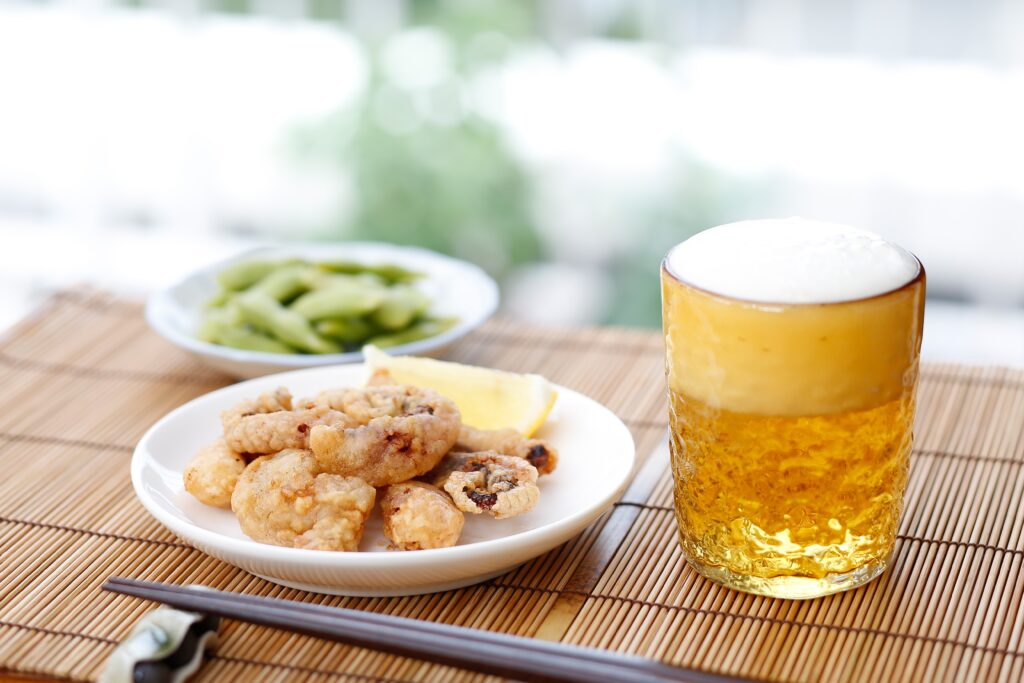
An izakaya is a Japanese pub that serves small, flavorful dishes meant to accompany drinks. It’s an excellent place to try a variety of foods like yakitori (grilled chicken skewers) and edamame (steamed soybeans).
Okonomiyaki (お好み焼き)
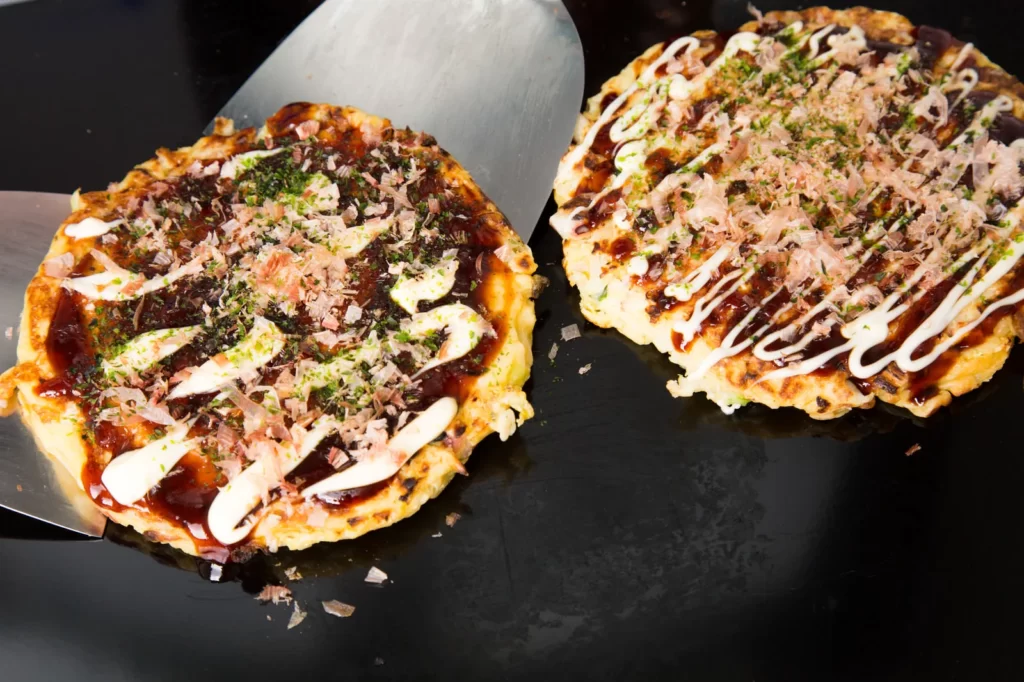
Okonomiyaki is a savory pancake filled with a mix of ingredients such as cabbage, meat, and seafood. The name translates to “cook what you like,” so it’s highly customizable.
Wrap-Up
Becoming a pro in Japanese food words is like opening a door to a world of tasty surprises. It’s not just about enjoying the food more; it’s also about showing respect for Japanese culture. Whether you’re feasting on sushi, slurping ramen, or savoring crispy tempura, knowing the lingo makes your food adventure even better. So, next time you’re at a Japanese restaurant, order with confidence and dive into the yummy offerings of this amazing cuisine.
Are you interested in visiting Japan now? If so, you can learn Basic Japanese phrases for Travel on my blog. Please check it up as well!
Thank you very much for reading my article today. Enjoy your culinary adventures with your new Japanese Food Vocabulary! 🎌🍣
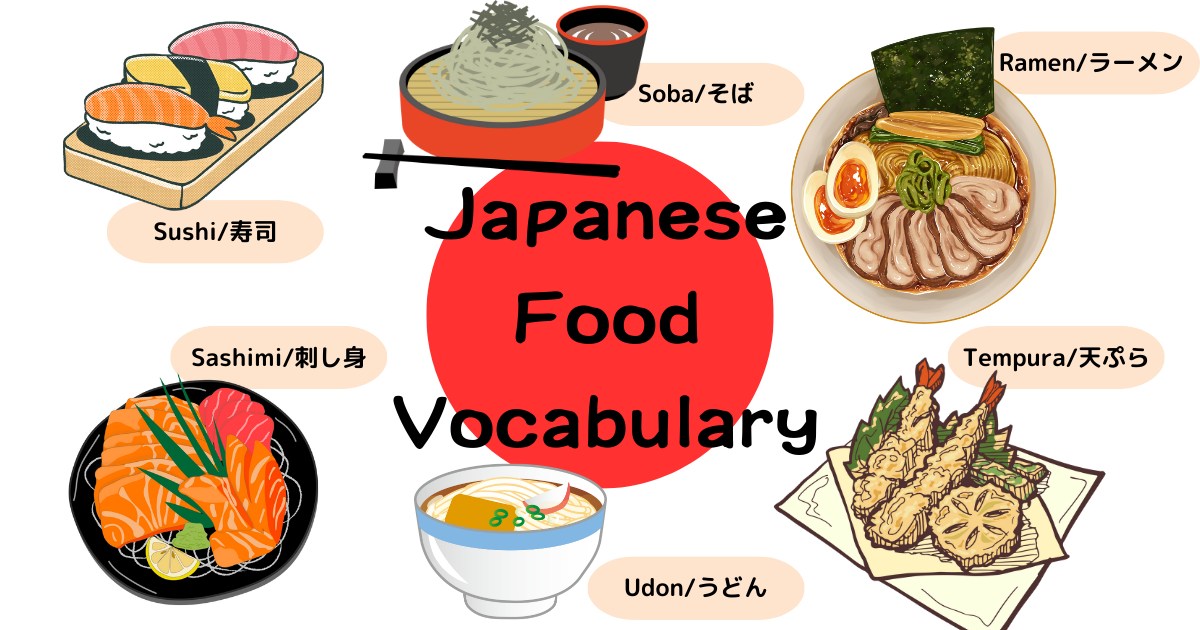


コメント